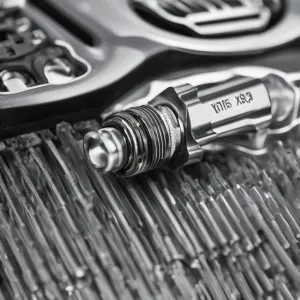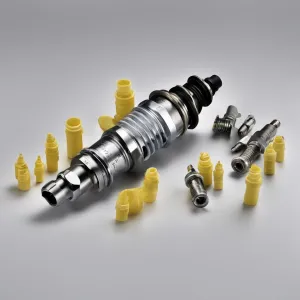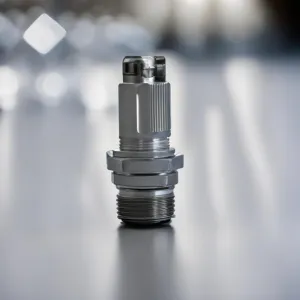How to Replace Your BMW X5 Spark Plugs: A Step-by-Step Guide

Changing BMW X5 Spark Plugs
Hey there, weekend mechanic! If your BMW X5 is starting to lose power or idle rough, it’s probably time to replace those old spark plugs. While the dealership will charge you an arm and a leg for this routine maintenance, it’s actually an easy DIY job you can tackle yourself in about an hour. Grab a socket wrench, buy a fresh set of plugs, and get ready to save some serious cash. This step-by-step guide will walk you through removing your old plugs, gapping and installing the new ones, and getting your Bimmer back to running like a top in no time. What are you waiting for? Pop the hood and let’s get started!
Why You May Need to Replace Your BMW X5 Spark Plugs
If your BMW X5 is due for new spark plugs, or you’re experiencing symptoms like rough idling, misfires, or trouble accelerating, it’s time to replace them yourself. Here’s how:
Why Replace Your Spark Plugs?
Spark plugs provide the spark that ignites the fuel and air mixture in your engine. Over time, spark plugs get worn down and dirty, providing a weaker spark. This can reduce performance and fuel efficiency. Replacing old spark plugs with a fresh set helps ensure peak performance and prevents long-term engine damage.
To replace the spark plugs in your BMW X5, you’ll need:
•New iridium spark plugs (NGK or Bosch brands recommended)
•Spark plug socket
•Ratchet wrench
•Anti-seize lubricant
•Torque wrench
Locate the spark plugs under the hood, typically along the sides of the engine block. Remove one spark plug at a time to avoid mixing up the wires. Apply anti-seize lubricant to the threads of the new spark plugs and screw them in by hand to avoid cross-threading. Then use the torque wrench to tighten to the recommended specification, usually around 20 to 25 foot-pounds for an aluminum cylinder head.
Reconnect the ignition wires and coil packs in the correct order. Start the engine and check for any error codes. Take your BMW for a quick test drive to ensure smooth performance before normal driving. With fresh spark plugs, your BMW X5 will run like new again. Pretty straightforward, right? Now get out there and enjoy many more miles of driving pleasure!
When to Replace the Spark Plugs in a BMW X5
When your BMW X5 starts misfiring, hesitating or losing power, it’s probably time for a tune-up. More specifically, it may be
time to replace those spark plugs. Spark plugs are responsible for igniting the fuel and air mixture in the cylinders, so old or
faulty ones can really impact your vehicle’s performance.
When Should You Replace the Spark Plugs?
Generally, you’ll want to replace the spark plugs in your X5 every 30,000 to 60,000 miles for the best results. The exact interval depends
on the type of plugs you have, so check your owner’s manual. If you start to notice issues like a rough idle, trouble starting, decreased
acceleration or increased fuel consumption before you hit that mark, it’s best to replace the plugs right away.
Replacing the spark plugs yourself is definitely doable for the mechanically inclined with some basic tools and about an hour to spare. Here
are the steps:
- Locate the spark plugs under the ignition coils on top of the engine. The X5 has a V8 engine with two banks of four cylinders, so there
will be eight spark plugs total, four on each side.
- Remove the ignition coils to access the spark plugs underneath. This may involve removing a cover panel on some models. Loosen the mounting
bolt or nut with a socket wrench and then lift the coils out.
- Thread the socket onto the spark plug and turn counterclockwise to loosen it. You may need an extension for the socket to reach down into the
well. Remove the old spark plugs.
- Compare the new and old spark plugs to ensure the correct replacement, then thread the new plugs into the cylinder heads by hand.
- Tighten the new spark plugs with the socket wrench to the recommended torque listed in your owner’s manual, typically around 15 to 20
foot-pounds for an aluminum cylinder head.
- Reinstall the ignition coils and cover panel, start the engine and check for any error codes. Clear any codes and test drive the vehicle to
ensure the new spark plugs are working properly. Your X5 should now be running like new again!
What Kind of Spark Plugs Does a BMW X5 Use?
Your BMW X5 uses spark plugs to ignite the fuel and air mixture in the engine cylinders. Choosing the correct spark plugs is important to engine performance and fuel efficiency. BMW recommends using Bosch Platinum +4 spark plugs for the X5.
Bosch Platinum +4
These premium spark plugs are designed specifically for BMW engines. They feature:
- A platinum center electrode and platinum ground electrode for maximum longevity, up to 100,000 miles. The platinum material is more durable and corrosion-resistant than standard copper spark plugs.
- A tapered ground electrode that provides maximum ignitability of the air/fuel mixture for improved performance and acceleration.
- A copper core that efficiently conducts the electrical charge for a strong spark.
- A built-in suppressor that reduces radio frequency interference for less static on the radio.
Bosch Platinum +4 spark plugs typically cost between $15 to $25 each, so replacing all six plugs in the X5 may run $90 to $150 total for parts. However, the extended service life means you won’t need to change them as often as standard plugs, saving time and money in the long run.
For the best performance, you should change the spark plugs in your BMW X5 every 30,000 to 60,000 miles based on your driving conditions and style. If you notice misfires, hard starts, loss of power or decreased fuel economy, it’s a good indicator it’s time for new spark plugs.
Using the recommended Bosch Platinum +4 spark plugs specifically designed for BMW engines will ensure peak performance, efficiency and reliability from your X5. While the upfront cost is more than standard copper plugs, the long lifespan and improved engine performance make them worth the investment.
Items You’ll Need to Change BMW X5 Spark Plugs
To change the spark plugs in your BMW X5, you’ll need to gather a few essential tools and parts.
Socket set
You’ll need a socket wrench set, preferably metric, with a 5/8-inch spark plug socket to remove the old plugs and install the new ones. An extension bar will also come in handy for reaching the plugs at the back of the engine.
Spark plugs
For most BMW X5 models, you’ll want to use Bosch Platinum or Iridium spark plugs, generally part number FR5DPP33 or equivalent. Check your owner’s manual for the correct plug type and gap for your specific X5 model and engine.
Gapping tool
A spark plug gapping tool allows you to adjust the gap between the center and side electrodes of the spark plugs to the specification in your owner’s manual. The gap needs to be precisely set for maximum engine performance and efficiency.
Anti-seize compound
Apply a small amount of anti-seize compound to the threads of the new spark plugs before installation. This will prevent the plugs from corroding and seizing in the cylinder head, allowing for easier removal on the next spark plug change.
Rags, compressed air, and a vacuum
Have some clean rags, compressed air, and a vacuum on hand to clean the area around the spark plug wells before removing the plugs. Blow out and wipe away any debris to prevent it from falling into the engine. vacuum up any dirt or dust.
Optional but useful:
•Protective gloves
•Flashlight
•Torque wrench: To tighten the new plugs to the proper torque specified in the owner’s manual. Over or under-tightening can damage the engine.
With the necessary tools and parts in hand, you’re ready to start the spark plug replacement on your BMW X5. Take your time and be careful, and you’ll have those new plugs installed in no time!
Step-by-Step Instructions to Change BMW X5 Spark Plugs
Now that you have all the necessary tools and parts, it’s time to dive in and change those spark plugs! Be sure to allow 2-3 hours for the full replacement job.
Remove ignition coils
The ignition coils sit directly on top of the spark plugs. Remove the coils by pulling straight up on them. This may require a firm tug, so use your hands or pliers to grasp the coil tightly. Place the removed coils on a cloth to keep them clean.
Access the spark plugs
With the coils removed, you’ll see the spark plugs down in the wells. Use your ratchet and socket to remove the old spark plugs. Be very careful removing the spark plugs, as they can strip easily if over-tightened. Grasp the plug and turn counterclockwise to loosen and remove.
Check the new spark plug gap
Before installing the new spark plugs, check that the gap between the center and side electrodes is set to the vehicle’s recommended specification. For most BMW X5 models, this is 0.043 inches. Use a spark plug gap tool to adjust the gap if needed. Installing spark plugs with an incorrect gap can lead to misfires, poor performance, and reduced engine power.
Install new spark plugs
Screw in the new spark plugs by hand at first to avoid cross-threading them. Tighten with your ratchet and socket in a clockwise direction. Torque the new spark plugs to the recommended specification in your X5’s repair manual. Overtightening can damage the cylinder head, so be careful.
Reinstall ignition coils
Push the ignition coils back onto the new spark plugs until they click into place. Start the engine and check for any trouble codes with a diagnostic scan tool. Clear any codes before driving to ensure proper operation. Take your X5 for a short test drive to confirm the new spark plugs are working well.
Congratulations, you’ve now successfully replaced the spark plugs in your BMW X5! Be sure to keep an eye out for any performance issues or check engine lights over the next few drive cycles. If all is well, you’re set for another 60,000 miles. Let the adventures continue!
Tips for Changing Your BMW X5 Spark Plugs
When changing your BMW X5 spark plugs, keep these tips in mind to make the job go smoothly:
Use the correct spark plugs
Be sure to get the right spark plugs for your X5’s engine. Check your owner’s manual for the correct spark plug type, heat range, gap, and tightening torque. Installing the wrong plugs can damage your engine.
Tighten plugs to the proper torque
Spark plugs must be tightened to the specified torque in foot-pounds to ensure proper operation and prevent damage. Using a torque wrench, tighten each new spark plug to the torque listed in your X5’s service manual. Tightening by hand can lead to plugs that are too loose or too tight.
Change plugs one at a time
When removing and installing the new spark plugs, do them one at a time. This makes it easy to keep the correct firing order and prevent crossed plug wires. Mark or label each plug wire to make reinstallation simple if needed.
Check the gap
Even with pre-gapped spark plugs, it’s best to double check the gap with a spark plug gap tool. An incorrect gap can reduce performance, increase emissions, and damage the engine. Adjust the gap if needed before installing the plugs.
Reattach plug wires carefully
When reattaching the spark plug wires, push each wire onto the plug firmly until it clicks into place. Make sure each wire is securely attached to the correct spark plug. Crossed or loose wires can disrupt the engine’s firing order and prevent it from running properly.
Start the engine and check for issues
Once the new spark plugs are installed, start the engine and listen for any knocking or pinging sounds, which can indicate a problem. Check for any diagnostic trouble codes with an OBD2 scanner. If all seems well, take your X5 for a short test drive to ensure proper operation before normal driving.
Following these tips will help ensure you change your BMW X5’s spark plugs correctly for continued smooth performance and efficiency. Be patient, work carefully, and don’t hesitate to consult a mechanic if you have any concerns.
Common Mistakes to Avoid When Replacing BMW X5 Spark Plugs
When replacing the spark plugs in your BMW X5, there are a few common mistakes to avoid. By being aware of these potential pitfalls, you’ll breeze through this maintenance task.
Using the incorrect spark plug type
Be sure to check your owner’s manual for the specific spark plug recommendations for your BMW X5’s engine. Using the wrong heat range or thread size can negatively impact performance and fuel economy or even cause damage.
Failing to replace all spark plugs at once
For even performance and maximum efficiency, all spark plugs should be replaced at the same time. Mixing new and old spark plugs can make the engine run unevenly.
Overtightening or undertightening the spark plugs
Spark plugs must be tightened to the proper torque specification, typically around 15 to 20 pound-feet for most BMW X5 engines. Overtightening can damage the cylinder head, while undertightening can allow combustion gasses to escape. Use a torque wrench to tighten the new spark plugs to the recommended spec.
Failing to check for coil or wire issues
While you have access to the spark plug wells, do a quick check of the ignition coils and spark plug wires. Look for any damage, corrosion or carbon tracks that could indicate a problem. It’s best to replace any questionable coils or wires at the same time as the spark plugs.
Not cleaning the spark plug recesses before installation
Before installing the new spark plugs, use a rag to wipe down the inside of each spark plug well. Built-up grime or debris could contaminate the new spark plugs. For tough deposits, use a small wire brush. Compressed air can also be useful for clearing out the wells.
Skimping on anti-seize compound
Apply a small amount of anti-seize compound to the threads of each new spark plug before installation. This will prevent the spark plugs from seizing in the cylinder head, allowing for easier removal on the next replacement interval.
By avoiding these common mistakes, you’ll complete the spark plug replacement on your BMW X5 with confidence. Your engine will reward you with improved performance, increased fuel efficiency, lower emissions and years of smooth operation.
How Often Should You Change BMW X5 Spark Plugs?
When it comes to your BMW X5, replacing the spark plugs on schedule is important to keep it running well. As a general rule of thumb, you should aim to replace your X5’s spark plugs every 30,000 to 60,000 miles depending on the year and engine.
Newer models and engines with more advanced ignition systems typically require plug replacement on the shorter end of that range, around 30,000 to 40,000 miles. For older X5 models with higher mileage, it’s a good idea to check your owner’s manual for the recommended replacement interval. It’s always better to replace your spark plugs too early rather than too late. Worn out or fouled spark plugs can reduce performance, increase fuel consumption, and in severe cases cause misfires or trouble starting.
- Iridium or platinum spark plugs, common in many BMW engines, generally need to be replaced more frequently than standard copper plugs.
- The hotter the spark plug temperature range, the sooner it will start to deteriorate.
- More aggressive driving styles can also speed up spark plug aging due to higher engine loads and temperatures.
- Environmental factors like lots of short trips, extreme ambient heat, or heavy traffic can negatively impact spark plug lifespan.
When in doubt, if your X5 is starting to feel underpowered, getting poor gas mileage, idling rough or having trouble starting, it’s probably time for a new set of spark plugs. Preventative maintenance is key to keeping your BMW X5 running well for the long haul. Replacing your spark plugs on schedule, along with other important services in your X5’s maintenance timeline, will help ensure many more miles of driving enjoyment.
BMW X5 Spark Plug FAQs
Once you’ve replaced your BMW X5 spark plugs, you may have some follow up questions. Here are some common FAQs about spark plugs in your X5:
How often do I need to replace the spark plugs?
It’s best to replace your X5’s spark plugs every 30,000 to 60,000 miles depending on your driving conditions. Frequent short trips, extreme heat or cold, and high performance driving can all shorten a spark plug’s lifespan. For most normal driving, replacing them every 45,000-50,000 miles is a safe recommendation.
What happens if I don’t replace the spark plugs?
Neglecting to replace your spark plugs on schedule can lead to loss of power, reduced fuel economy, misfires, and difficulty starting. As spark plugs age, their electrodes erode and the gap between them widens, making it harder for the spark to ignite the fuel-air mixture in the cylinders.
Do I have to replace all the spark plugs at once?
It’s best to replace all six spark plugs in your X5 at the same time. Spark plugs work as a set to properly ignite the engine, so if some are new and some are worn, it can lead to power loss and performance issues. Replacing them all together will ensure even, optimal performance.
What type of spark plug does my BMW X5 use?
BMW X5 models from 2000 to 2013 with the M54, N62, and N63 engines use Bosch Platinum +4 (FR8KPP33U) or equivalent spark plugs. X5s from 2014 onward with the N55 and B58 engines use Bosch Iridium (FR10DPP33) or equivalent spark plugs. Double check your X5’s engine specs to determine the correct replacement spark plug.
Do I need any special tools to change the spark plugs?
Replacing your X5’s spark plugs requires a few basic tools: a spark plug socket (16mm for most X5 engines), an extension bar, a ratchet, dielectric grease, a gap gage, and possibly an anti-seize compound. Make sure not to overtighten the new spark plugs during installation. Torque them to the recommended specification for your X5’s engine, typically around 15 to 22 foot-pounds.
With the proper tools and technique, replacing your BMW X5’s spark plugs yourself can save you time and money. If you have additional questions or concerns, don’t hesitate to contact your trusted BMW service professional.
Conclusion
With the new spark plugs installed, you’re ready to put your BMW X5 back together. Reinstall the ignition coils, intake hose, and engine cover. Connect the battery and turn the key—your X5 should start right up with a satisfying roar. Congratulations, you just saved yourself a ton of money by changing your own spark plugs! Not only that, but you gained valuable experience working on your vehicle. Now you can tackle other basic maintenance with confidence. The next time your X5 needs new spark plugs, you’ll breeze right through the job. Keep on wrenching and enjoy many more miles of motoring in your BMW!
















No Comment